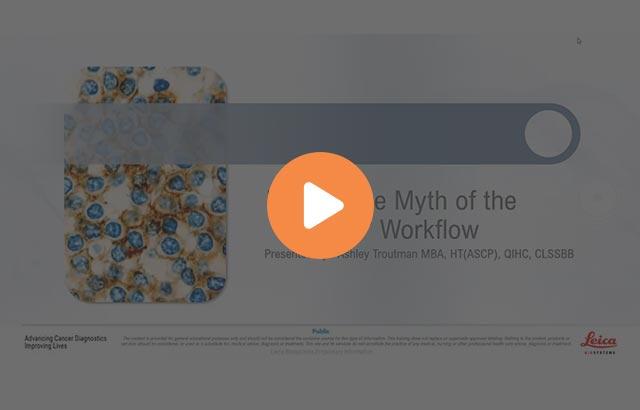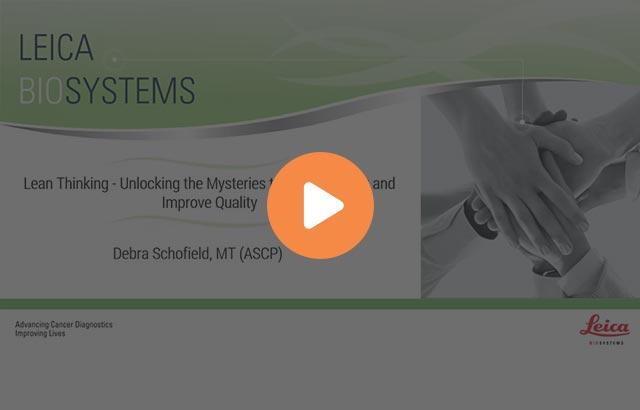
Optimizing Automated Tissue Processing Efficiency to Reduce Cost
Cost-effectively managing a large pathology lab while maintaining the high level of quality required by a world-renowned medical center is a difficult balancing act for any hospital administration. When the Leica Biosystems Process and Solutions Optimization Team evaluated the lab’s operating efficiency, the team identified opportunities to reduce technologist maintenance time by 72%, save up to 46% on reagent costs, and optimize the lab’s footprint by 55%.

The Leica Biosystems Process and Solutions Optimization Team partnered with a large U.S.-based academic medical center to examine how to best utilize equipment in its pathology lab to gain efficiencies while saving money. This hospital is most interested in the impact that equipment can have on reducing turn-around time and saving money in the routine histology lab. By benchmarking current practices and performing a capacity analysis, the Process and Solutions Optimization Team can quantify key performance indicators (KPIs) contributing to the lab’s operational efficiency and present a solution that satisfies its goals.

Time spent on site revealed the use of 18 single-retort tissue processors from a wide array of vendors, leading to non-standardized training, underutilization of equipment, and variable daily procedures, increasing the opportunity for manual error. More importantly, the use of 18 disparate tissue processors led to the question of reagent usage—and the reagent usage for 18 tissue processors is vast. Performing daily reagent exchanges on several tissue processors had become a time and reagent-consuming task. It was estimated that approximately 1/3 of the processors were “rotated” each week and 1/3 were completely changed. This equated to a minimum of 45 gallons of alcohol (6 processors x 6 alcohols each + 9 additional alcohols per rotation), 24 gallons of xylene (6 processors x 4 xylenes each) — accounting for a significant amount of reagent usage per week for one lab. Translating this into dollars, using list pricing from a common scientific vendor, the spend for 18 processors was $22,068 per month.

As it pertains to maintenance and time spent interacting with the instrument, an average of 30 minutes per instrument was required for reagent change and cleaning/maintenance. This amounted to:6 tissue processors per day @ 30 minutes each = 3 hours per day x 3 days per week = 9 hours per week or 468 hours per year (equals 0.23 FTE to perform tissue processor maintenance).
By examining alternative, dual retort technology with reagent management software, the following savings were realized: 5 dual retort tissue processors instead of 18 (substantial space savings). Even when following the exact protocol for changing reagents, there was a significant decrease in annual time spent performing this task: 5 tissue processors per week @ 30 minutes each = 2.5 hours x 52 weeks = 130 hours per year. This is a 72% reduction in time spent maintaining tissue processors.
When it comes to space, there is no question that 5 standard-size tissue processors occupy less space than 18. When each individual processor is measured and added together, it equates to 76 ft2 for 18 processors versus 34 ft2 for 5 dual retort processors.
Comparative analysis of time, space and cost savings:

In understanding work processes (including tissue-processor maintenance) and data analytics, the expertise of the Leica Biosystems Process and Solutions Optimization Team demonstrates how to best collect, and leverage KPI’s to help lab managers and hospital administrators understand their own processes to effectively improve quality, integrate solutions, and optimize efficiencies.
Pricing found at www.sigmaaldrich.com/united-states.html; Xylenes: product number XX0055-3; $507.00/case andReagent Alcohol: product number 793175-4X1GA-PB; $220/case
Projections and Realized Results are specific to the institution where they were obtained and may not reflect the results achievable at other institutions.
Want to see how the Leica Process and Solutions Optimization team can help improve your lab's workflow?
Related Content
Leica Biosystems 콘텐츠는 Leica Biosystems 웹사이트 이용 약관의 적용을 받으며, 이용 약관은 다음에서 확인할 수 있습니다. 법적고지. 라이카 바이오시스템즈 웨비나, 교육 프레젠테이션 및 관련 자료는 특별 주제 관련 일반 정보를 제공하지만 의료, 규정 또는 법률 상담으로 제공되지 않으며 해석되어서는 안 됩니다. 관점과 의견은 발표자/저자의 개인 관점과 의견이며 라이카 바이오시스템즈, 그 직원 또는 대행사의 관점이나 의견을 나타내거나 반영하지 않습니다. 제3자 자원 또는 콘텐츠에 대한 액세스를 제공하는 콘텐츠에 포함된 모든 링크는 오직 편의를 위해 제공됩니다.
모든 제품 사용에 다양한 제품 및 장치의 제품 정보 가이드, 부속 문서 및 작동 설명서를 참조해야 합니다.
Copyright © 2025 Leica Biosystems division of Leica Microsystems, Inc. and its Leica Biosystems affiliates. All rights reserved. LEICA and the Leica Logo are registered trademarks of Leica Microsystems IR GmbH.



